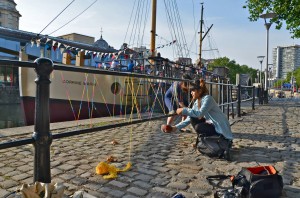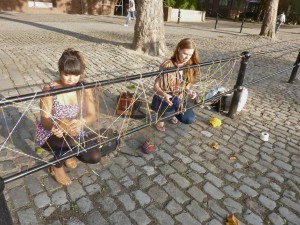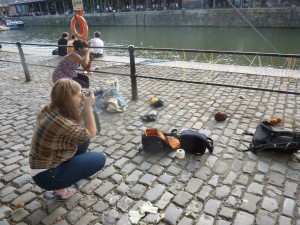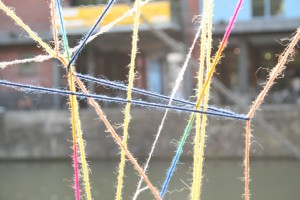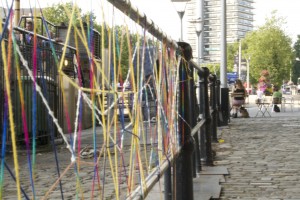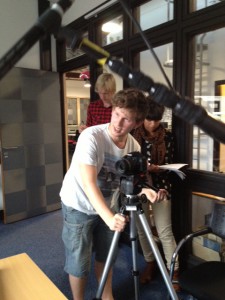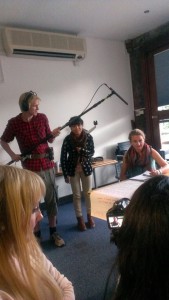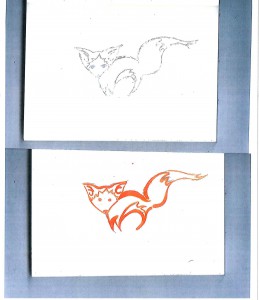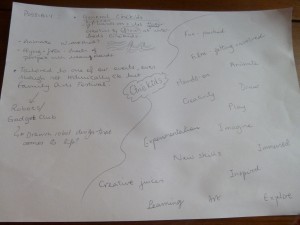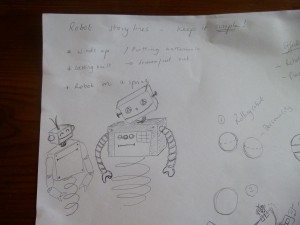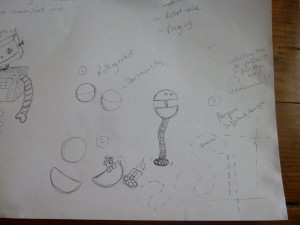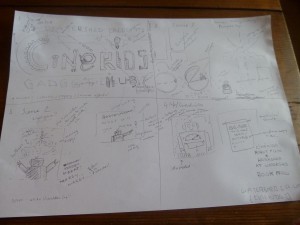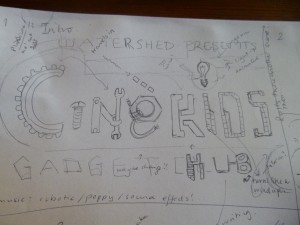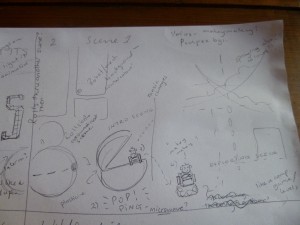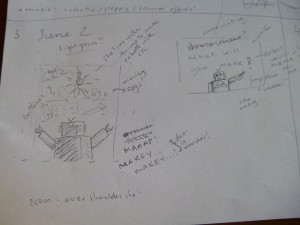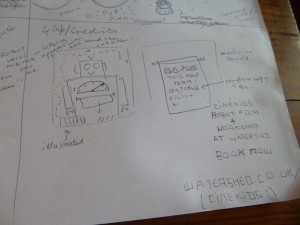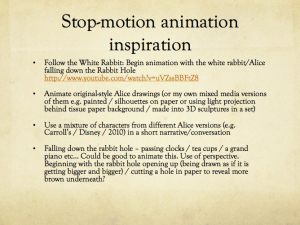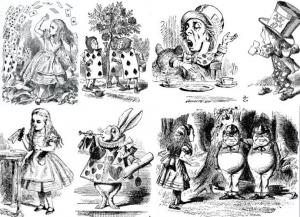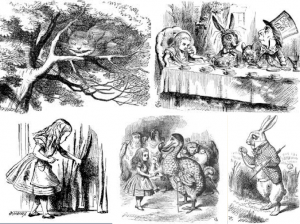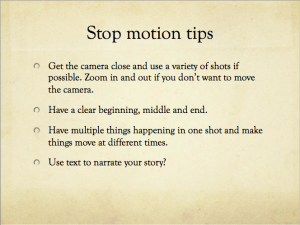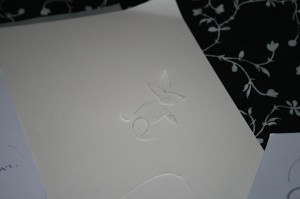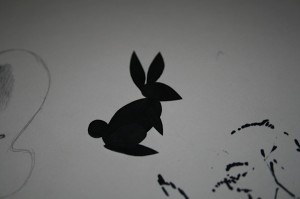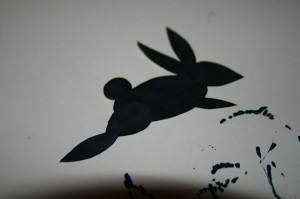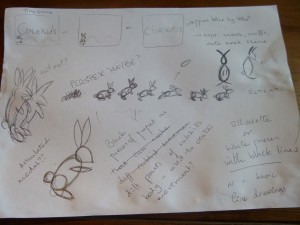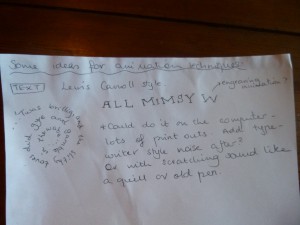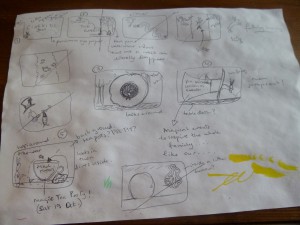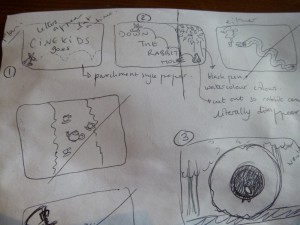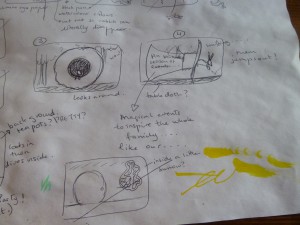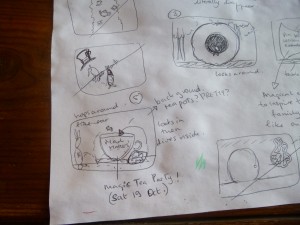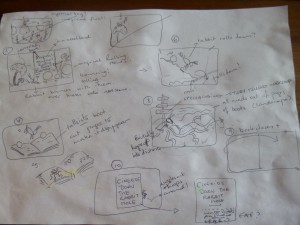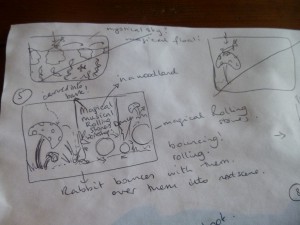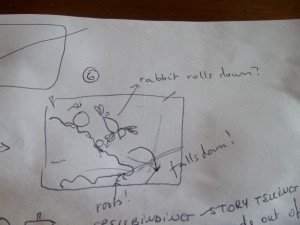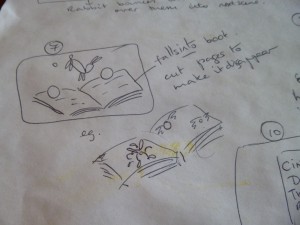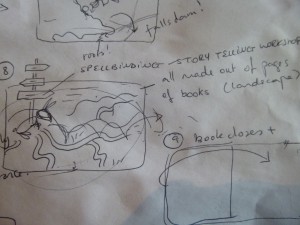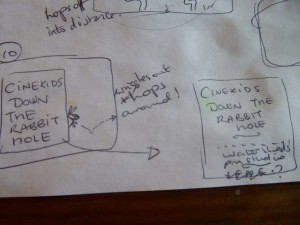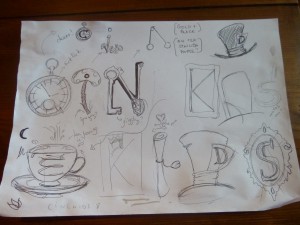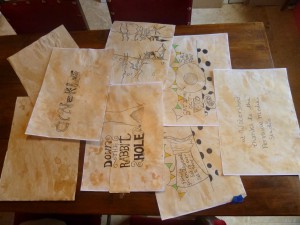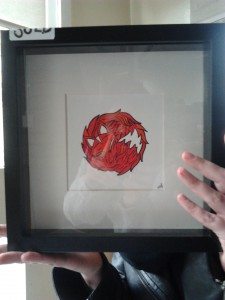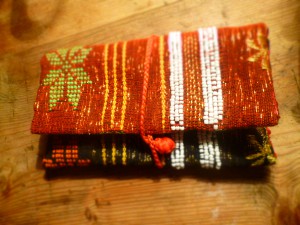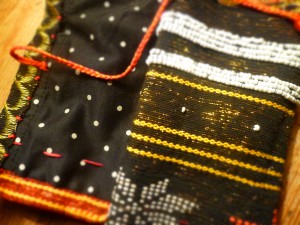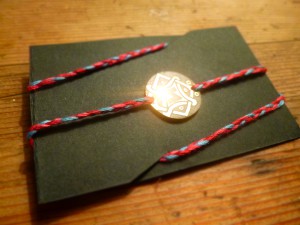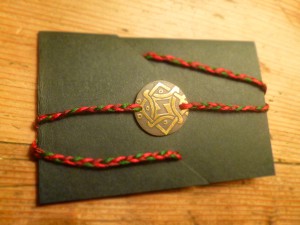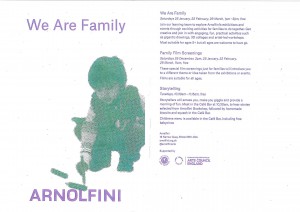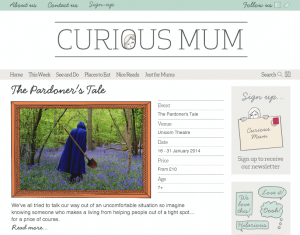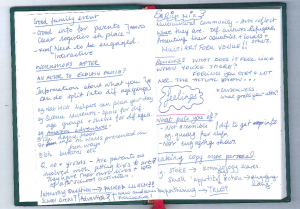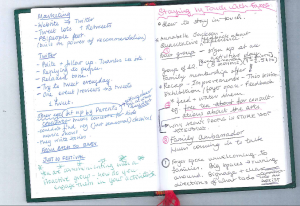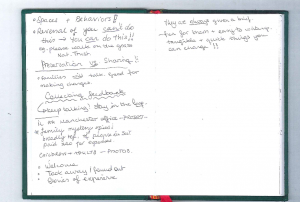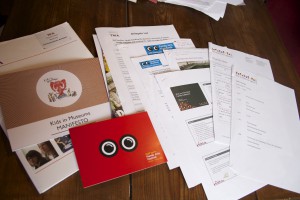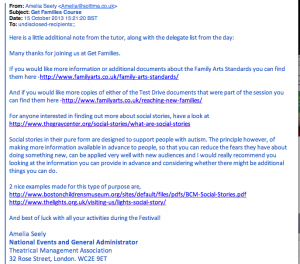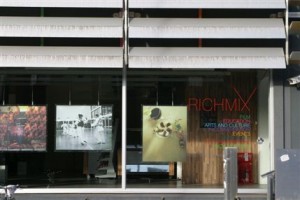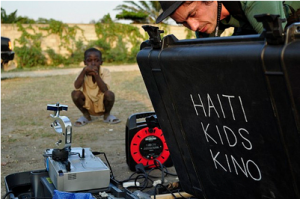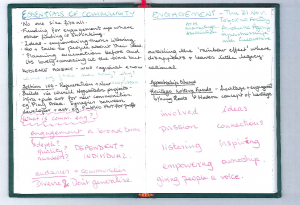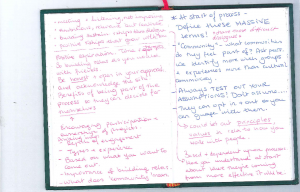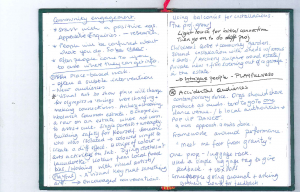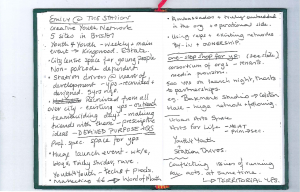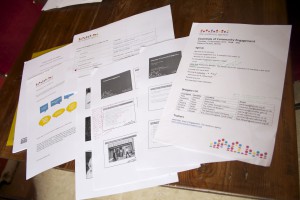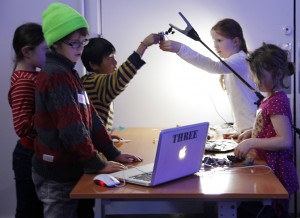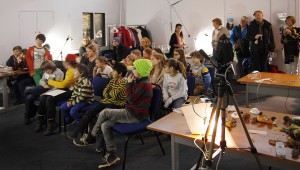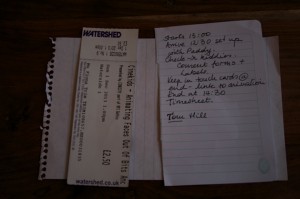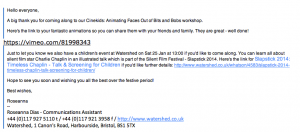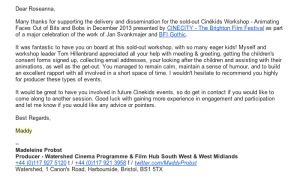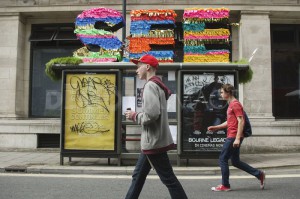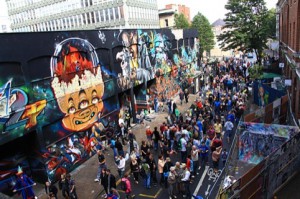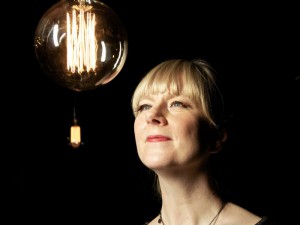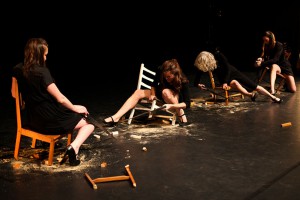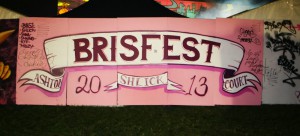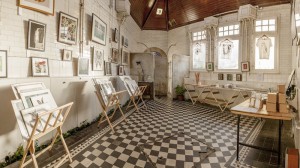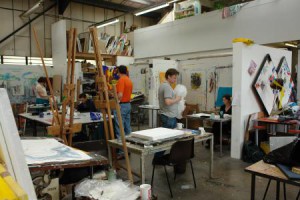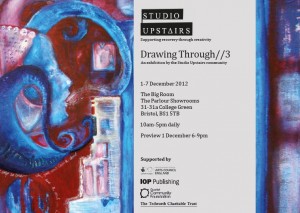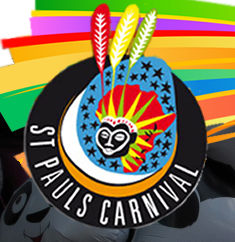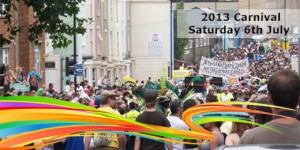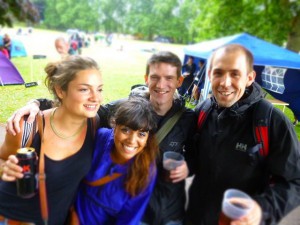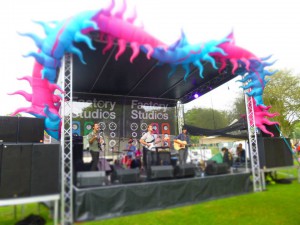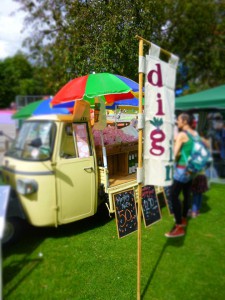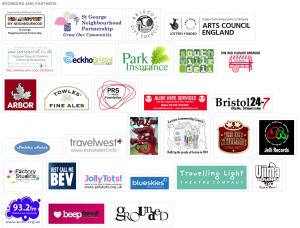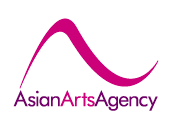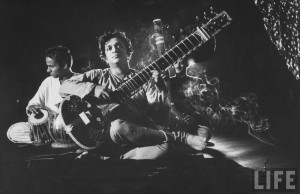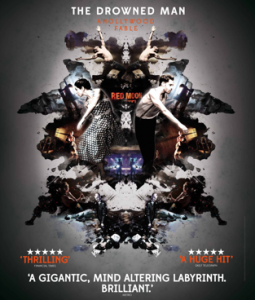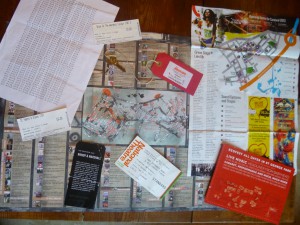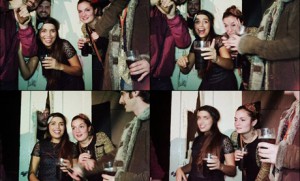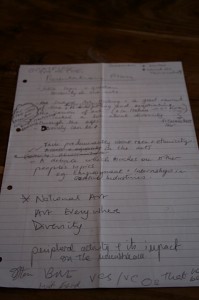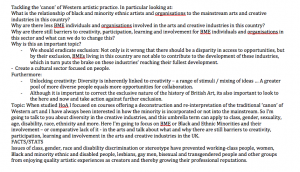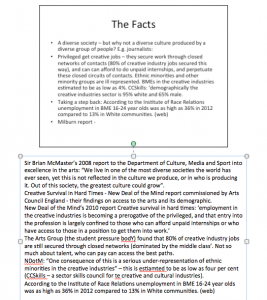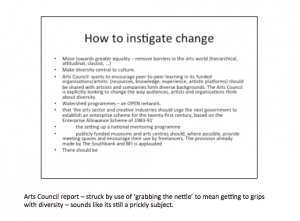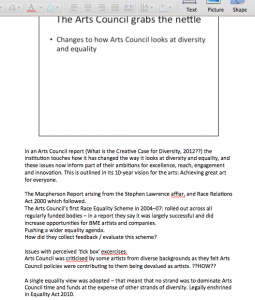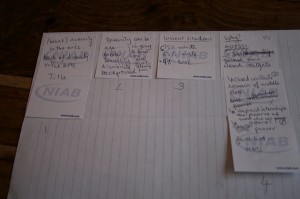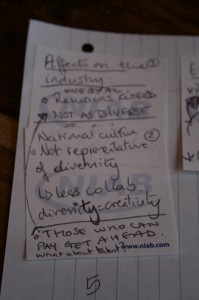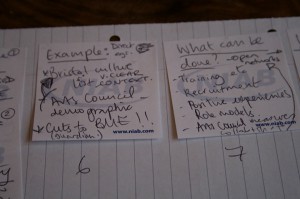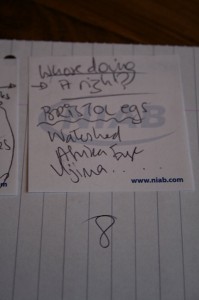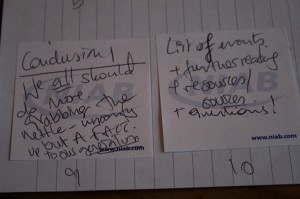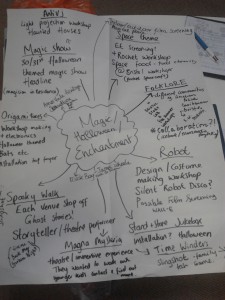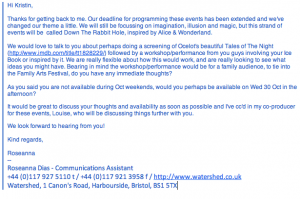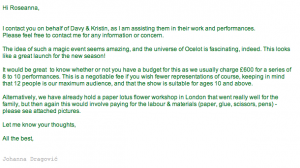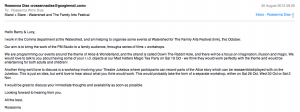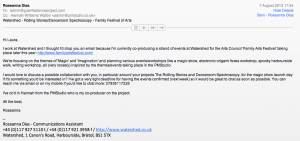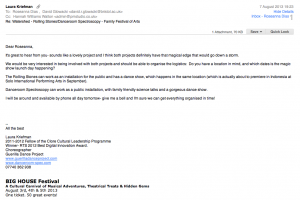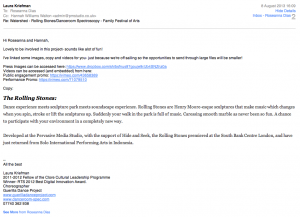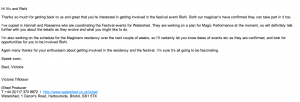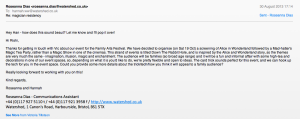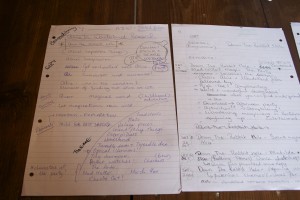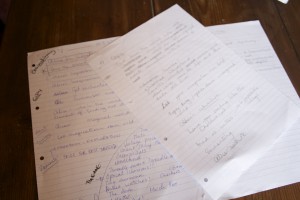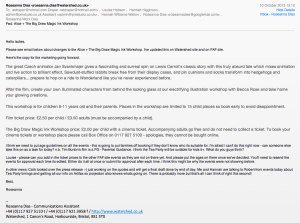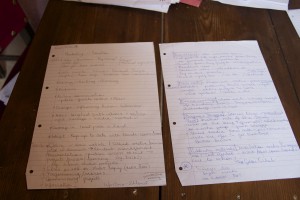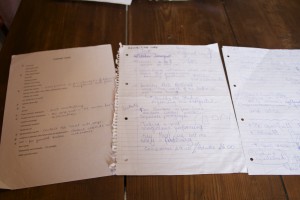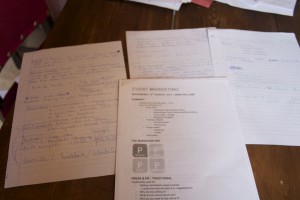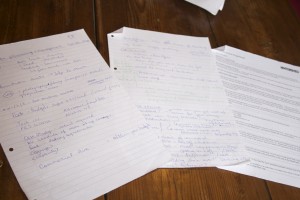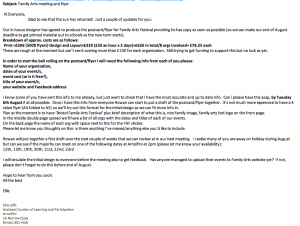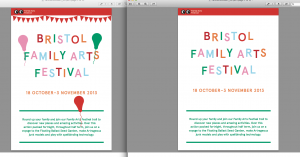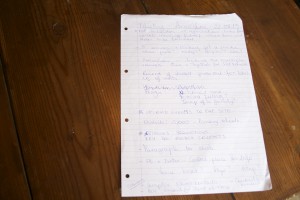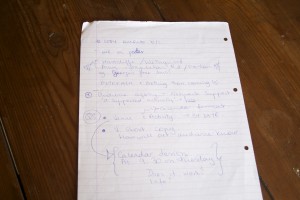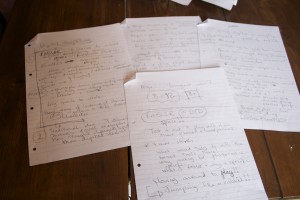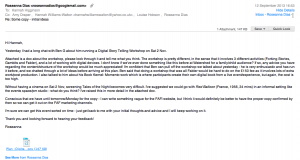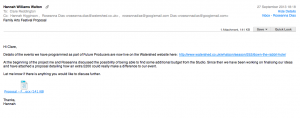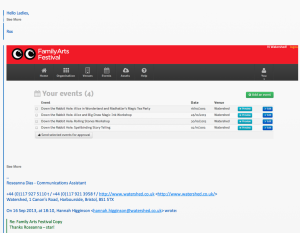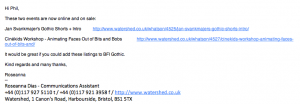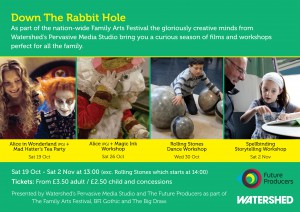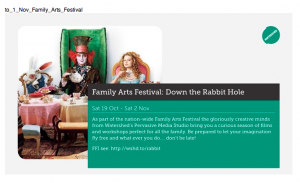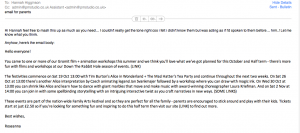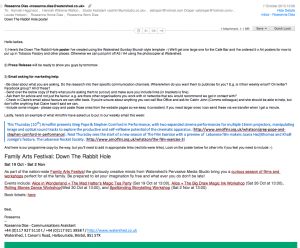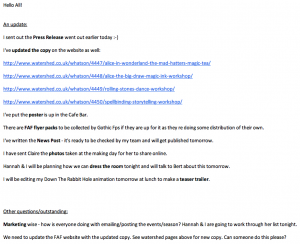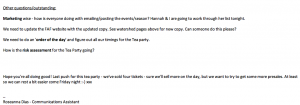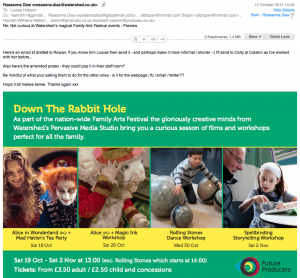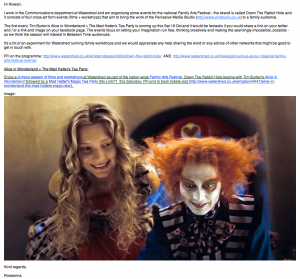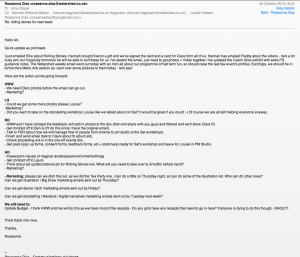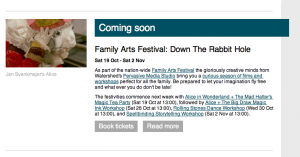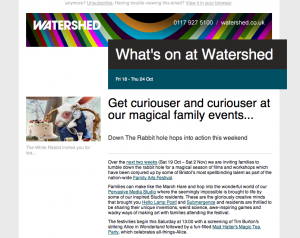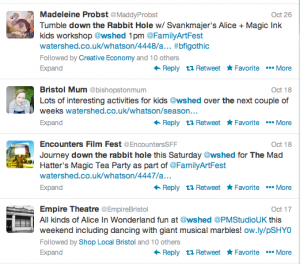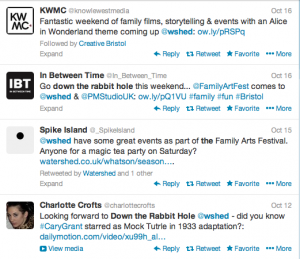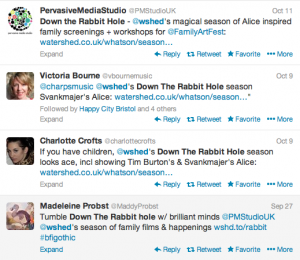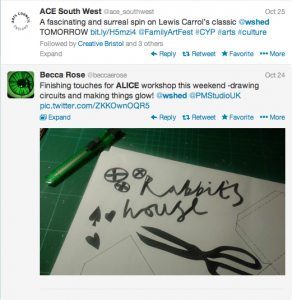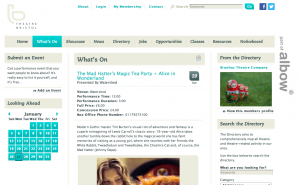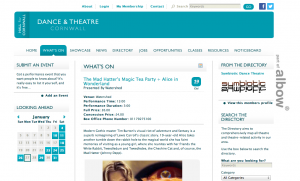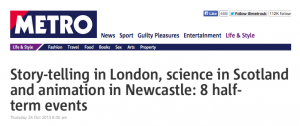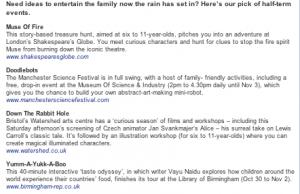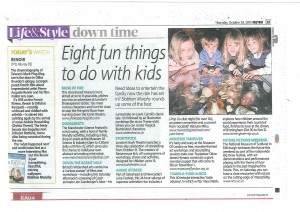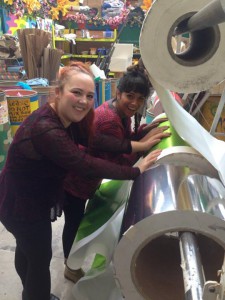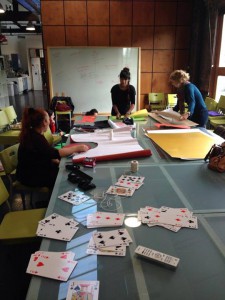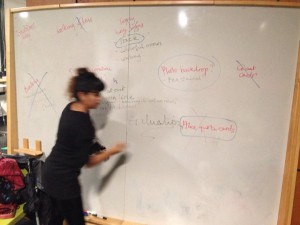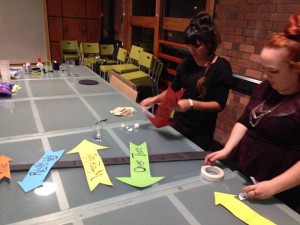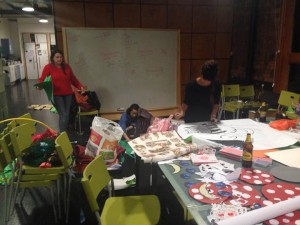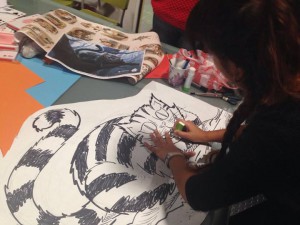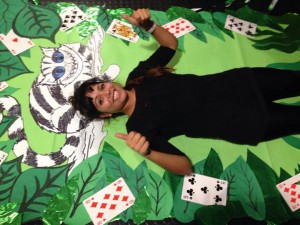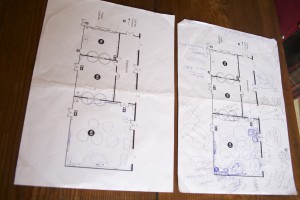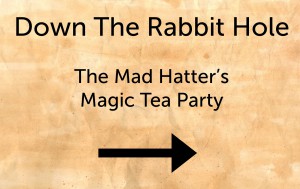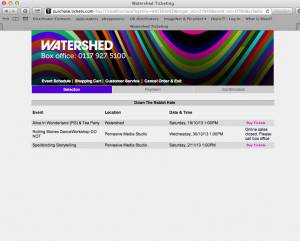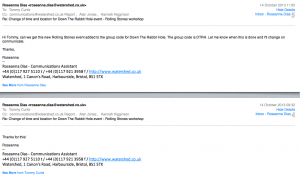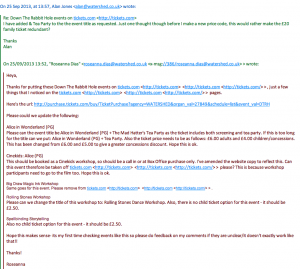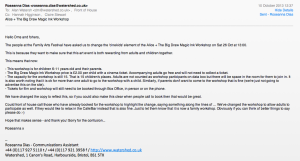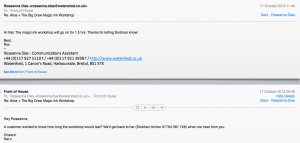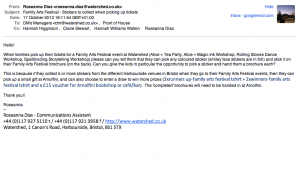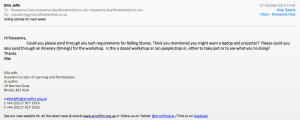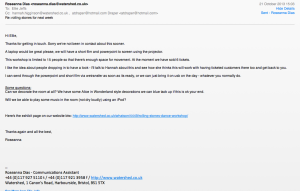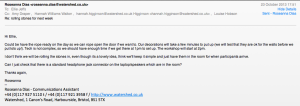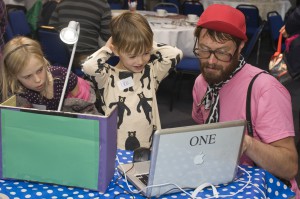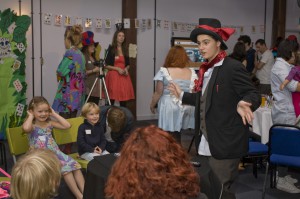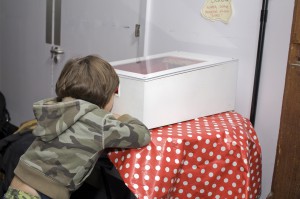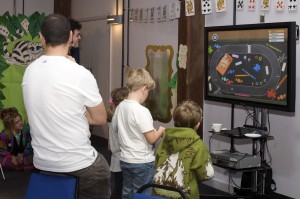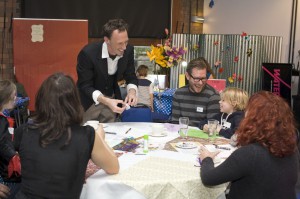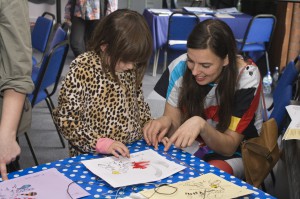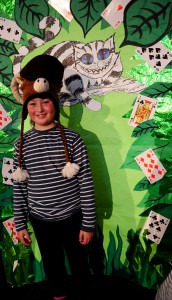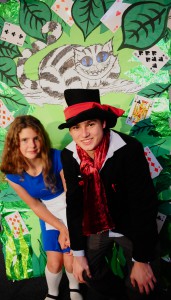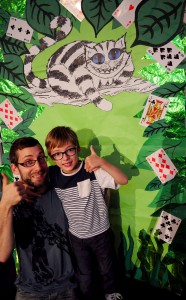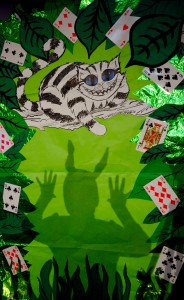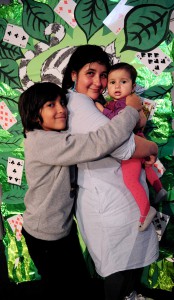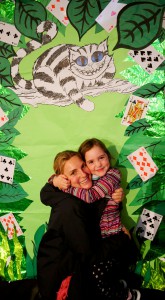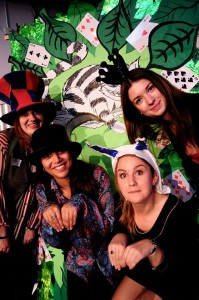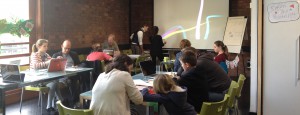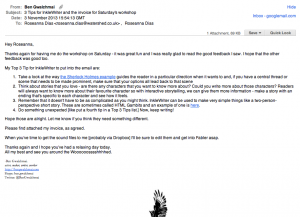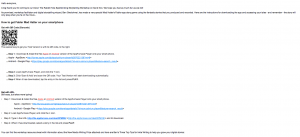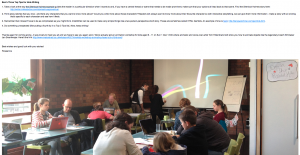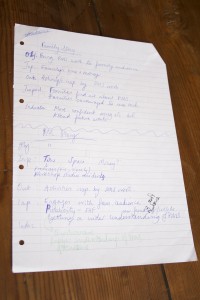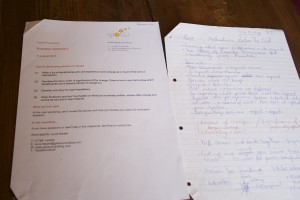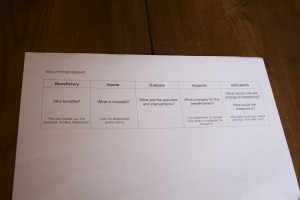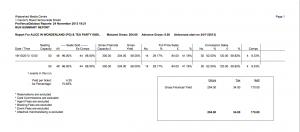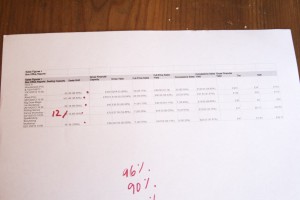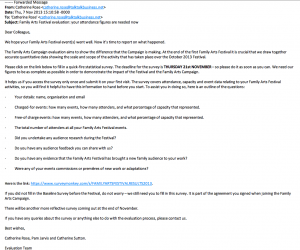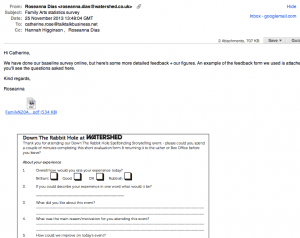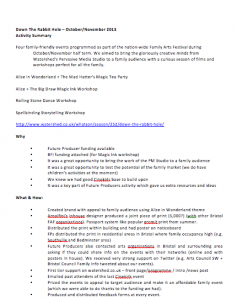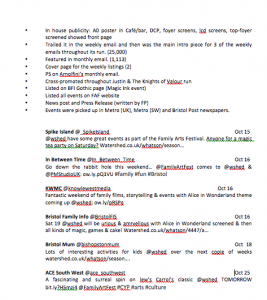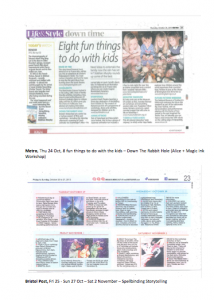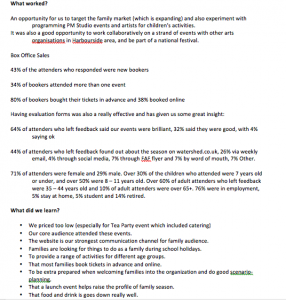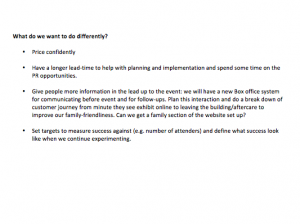A brief introduction to the programme
I have just met with Claire Simmons (our Gold Arts Award Advisor) and Hannah Higginson (Watershed’s Engagement Project Producer) who introduced me to the Future Producers Plus programme which enable you to complete the Gold Arts Award.
The Gold Arts Award is split into two units. Unit 1 focuses on my own art and career path. For this unit I’ll have to extend my own arts practice by learning new skills and creating a new work, research my chosen career path and do some training or volunteering in that field, then research and review arts events and do an interview with an industry professional. Unit 2 focuses on an arts project that I will plan, deliver, and evaluate.
Unit 1 Part A
My Artistic Challenge
I have been challenged to create promotional material for Watershed’s Cinékids programme. Cinékids is a monthly film screening followed by a workshop where children aged 6-11 years can try out different things (e.g. stop-motion animation, illustration, dance, creative writing) and generally let their creative juices flow. The aim is to introduce these children to creative practices, practitioners and the creative industries, as well as fostering their imagination, talent and love of arts and culture.
Here is the original new art work brief:
“We have a small but dedicated following of parents and kids who regularly attend the Cinekids screenings and workshops but want to develop new audiences for the slot.
Your brief is to create an art piece to promote Cinekids either within or beyond the building. Could you design a mural? Make a short film trailer? Record a musical jingle? Create a stop frame animation to go online? Choreograph a flash mob dance? Or think of something else?
The art piece should reflect childlike characteristics such as being playful, daring, adventurous, watchful, destructive and performative.”
The diverse nature of the Cinekids events means there is lots of scope for creativity in the promotional materials I could produce. I intend to marry my existing artistic skills or primary art form/s with new skills or secondary art form/s to produce a new experimental art work that’s in keeping with the brief.
My Primary Art Form
I used to do a lot of sculpture, installation and painting when I was at college studying Fine Art. I especially loved mural painting and making large works in mixed media. I also studied lots about sculpture, installation and Now I would say my primary art form is illustration as its easier for me to practice when I have less space, time, and materials. I currently work full-time so practice my art in my spare time at home. I studied lots of art and artists in depth during my History of Art degree and have always been interested in the stories, theories and methodologies behind different art works.
Hosting a Skills-Swap Workshop
As part of this unit of the course I gave a skills-swap workshop so that I can introduce someone to a new art form. My soft spot for installation meant I decided to host an installation workshop with a fellow Future Producer, Lily.
The workshop involved giving a break down of what installation is or can be. In my opinion, installation is a very flexible art form. It can be anything that manipulates space and makes audiences interact with or think about their surroundings in a different way.
At the workshop we highlighted some inspirational artists (I especially love Land Artists and some of the Young British Arists) and talked about their different methods and ideologies. We also talked through the practicalities of what Zoe, the workshop participant, intended to do for the Cinekids brief.
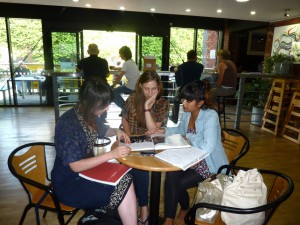
Lily and I both agreed that if we were to teach installation, then we would need to practice it. So with minimal materials (some colourful string and scissors) we headed out to the other side of the harbourside and started off our installation, tying wool around the railings to create different patterns, angles and combinations.
A few people commented positively on our work – and most importantly, we made lots of people stop and look at that area in a different way. One person asked us how long it was going to take to do all the railings along the harbourside! But we kept it contained to a small section of railing. We decided to leave behind some of the balls of string we’d been using that evening, still attached to our work in the hope that someone would continue the piece.
In the morning, I saw that someone had continued the installation onto further railings, making our installation genuinely interactive: It started with us making it, the passersby commenting and looking, and now we had unknown collaborators expanding the work. Our installation showed how this art form can open up a dialogue between people and the spaces they inhabit, how it can facilitate a reinterpretation of space, materials and even the notion of ‘art’.
The photos above are ones I took on a digital SLR camera, which Lily showed Zoe and myself to use. We learnt about focusing and creating angles in our images. It was great to learn some new skills in photography, which I am sure I will put to good use throughout this course and beyond. I am also going to a filmmaking workshop, which I might choose as my secondary art form to combine with my illustration and mixed media for the Cinekids brief.
My new art form
Filmmaking
Initially I thought about incorporating filmmaking into this project and did an excellent workshop with Luke.
But when I came down to brainstorming for an illustration and filmmaking mash-up, I kept seeing my ideas for the project in terms of stop-frame animation. This is because if I were to do filmmaking for this piece I would want to make a short advertisement trailer and then incorporate illustration on top of the footage, but I would need help from a professional to do this. Instead I felt I could experiment a lot (and independently!) with my existing art forms if I chose to work with stop-motion animation, which is a much more contained/individual process.
I also love the playfulness of stop-motion and see it as a particularly effective promotional tool for both children and adults because it can be particularly charming and memorable. I will use my illustration skills and probably incorporate other 2D design techniques, for example collage/mixed media to make a stop-motion animation. It would also be possible to create a mini-installation and use this as a stage-set style backdrop for the stop-motion.
The skills I learnt in the filmmaking workshop will still help with my stop-motion work because I learnt about the principles of planning and making a film. I looked at the different stages of production (pre-production, production, post-production), as well as composition and framing. I had some audio training, used the camera, and talked about editing software. Before I gave filmmaking a go the equipment intimidated me, but now I feel more confident about producing a short film and I will definitely give it a go in the future.
Animation
I went and talked to Rose Robbins before one of her animation workshops at Watershed as part of our Gromit’s Movie Marvels series. She is the ideal person to speak to regarding this project because she already understands the Cinekids brand and I loved the short promotional video she produced for this season.
We discussed planning my animation, different techniques and effects, using the I Can Animate software to capture, edit and export my animation and I shared some of my initial ideas. Using what I learnt from Rose that day, I made (very quickly!) this short stop-motion animation.
My Understanding of the Cinekids Artwork Brief
I am keen to make a lively, engaging, and inventive stop-motion animation video so that it reflects the playfulness of the Cinekids brand. Although I want my video to look as professional as possible, it should also showcase the type of work which Cinekids participants can expect to make in a stop-motion animation workshop, so its important that the video is not too complicated or fussy so it does not alienate potential participants.
The brief also talks about developing a new audience for these events, so I think it is important to get the video out there on as many online platforms as possible (e.g. Netmums website and through Twitter networks) as well as Watershed’s usual channels (e.g. website page/s and Facebook).
I have decided that I want to do a Cinekids video for a particular event (one which I am involved in programming for the Family Arts Festival), so that this video can potentially be altered and used to promote these events.
Once I have made my animation I will present it to the rest of the Future Producers and a panel of three judges who will all give immediate feedback on the project. This will be recorded in a video and I will post it below in the appropriate section. The judging panel will decide which artist and artwork will receive funding to have their idea developed into a promotional tool for Watershed to use in the future promotion of Cinekids.
I will record my creative process by posting the film on this blog after I have edited it and put up pictures of me making it, scan in my brainstorms, other preparatory sketches and some of my research. I am looking forward to seeing how animation will influence my illustration and vice versa.
Ideas, Research + Planning
Initially I was arranging a robot making workshop to fit into The Imagination Lab season (for details see my Unit 2 posts). Even at this stage I could already see how one art form was influencing the other: I found this wonderful illustration of a robot for the Robot Convention and design competition we are running at Watershed, and this inspired me to make my own drawings, which I thought could become part of my animation. I also experimented with an idea of a fox-themed animation for a Fantastic Mr Fox film and Origami Fox workshop that I was following up at one point.
When The Imagination Lab became the Alice in Wonderland inspired Down The Rabbit Hole season, I decided to change the animation to reflect this. Below is some documentation of the creative process: my search for inspiration, storyboard planning, research into how to make an animated film as well as sketches and notes for the different ideas. I’ve also included a powerpoint presentation that I used to brainstorm the rabbit/Alice idea.
Online research
Stop motion Ideas/Design:
– Foxes: http://www.youtube.com/watch?v=ilKaJRsmZiI
– http://www.youtube.com/watch?v=WtWSQ-plUrc
– http://www.youtube.com/watch?v=6vZ0iqUS6sg
– http://www.youtube.com/watch?v=fxQcBKUPm8o
– Simple drawings: http://www.youtube.com/watch?v=fPSa2o-I_54
– Robot stories: http://www.epicshortfilms.com/a-story-about-robots/
– Writing design: http://www.theimaginariumstudios.com
– Cinekids promo video inspiration: https://www.watershed.co.uk/whatson/4285/cinekids-stop-motion-animation-summer-school and https://www.watershed.co.uk/dshed/cinekids
– More kids + making: http://www.thekidworkshop.com/open-play/
– Design inspiration: http://www.behance.net/gallery/London-solo-show-LAVA-gallery/1267637 and http://www.thekrah.com
– Google images searches: https://www.google.co.uk/search?q=robot+lettering&client=safari&rls=en&tbm=isch&tbo=u&source=univ&sa=X&ei=hIEYUvGvMOaX1AXUm4CYCg&ved=0CDQQsAQ&biw=1119&bih=663#imgdii=_ / https://www.google.co.uk/search?q=robots&client=safari&rls=en&source=lnms&tbm=isch&sa=X&ei=m4AYUtyNKafL0AWMrYHgBw&ved=0CAkQ_AUoAQ&biw=1119&bih=663#imgdii=_ /
– Watershed inspirations: https://www.watershed.co.uk/get-involved/opportunities/2013-09-13/robot-design-competition/
– Hexbugs: http://www.hexbug.com/nano/hexbug-nano-single.html
Some notes I made to capture my ideas:
“This idea shows an illustrated robot animation with a mini story, with the aim of getting adults to book their kids into the Cinekids Robot Film and Workshop in October half term. Title page, lettering inspired by robots and mechanics, ‘Cine’ appears, then ‘Kids’, then the lightbulb for the ‘I’ appears and switches on with a click. Story: a futuristic ball rolls onto the lettering and bounces down, rolling out of shot and into a new shot. The background is a water colour of machine-like parts that tessellate together, the nuts and bolts move a little, and the ball rolls into shot and pings/pops open. Out pops a tiny robot who makes small noises (think of Wall-E). The next scene sees the little robot exploring as if he is in a computer game, and with the use of Perspex sheets I will design different layers to the background (e.g. binary code, flashing laser beams, magical puffs of smoke). As the little robot bops around the screen, he says ‘makey makey’. The next scene is an over the shoulder type shot where the little robot finds a store room (place with shelves) full of bits and bobs for making robots and he exclaims ‘makey makey’ slowly and in wonderment as the lightbulb in the room clicks on. I may animate some of the things on the shelves too (e.g. moving cogs, dancing wire – as if the materials were excited too). Next will be a white screen (as the beginning) where the little robot pops up from the bottom of the shot and opens out his arm to unveil a little hexbug as the letters above his head begin to appear slowly (‘What will you make?’) and we hear the voice of the robot say ‘ma ma mu maaaa’. Next shot we see the robot torso (medium shot) and as the little hexbug climbs around the edge of the shot, some paper starts to print out of the little robots chest. It reads ‘Cinekids Gadget Club at Watershed. Book now. wshd.co.uk/cinekids’. And that’s the end of the short film.”
I made a presentation mood-board for the Down The Rabbit Hole animation which helped me group together images and links for this art work all in once place.
Inspiring stop motion/animated films: http://www.youtube.com/watch?v=QzxXQhMZHHo / http://vimeo.com/67774633 / https://www.youtube.com/watch?v=xzQWgv5sNm4 / http://www.youtube.com/watch?v=kSwz01n8bhc / Shoe (2008) http://www.youtube.com/watch?v=wz0rt8HIl0s / Scary but amazing! http://www.youtube.com/watch?v=Uj4RBmU-PIo
Making My Art Work
After I had made these last sketches, I simply tea-stained two pieces of A3 paper, photocopied this and began experimenting with how to animate. I chose to use pieces of paper in the end so I could still incorporate my origami idea and it recalled Michel Ocelot’s beautiful silhouette animation which I think is stunning. I chose this method first and foremost because I liked the simplicity of it and I wanted the video to have a handmade quality.
I set up my equipment in Watershed’s edit suite as Paddy and Rose had shown me previously, and worked on my animation. It took me a good few hours and it was a very slow process (I had to cut my idea short and just do the first few sketched out scenes), but it was very enjoyable. I found the process exciting because you could make different effects quite simply, e.g. adding details frame by frame, turning backdrops upside down to re-use the illustrated parts and then add details to change their look, making things disappear. It took lots of patience to arrange and re-arrange the little pieces of black paper that made up the rabbit’s body parts and it took me a while to get his hopping motion looking realistic, but I got there in the end! Once I began the animation properly, I followed my plan, drew the backdrops as I went along, adding text and was constantly watching my video as I worked.
In my next evening session I edited my animation. I had to make sure the frames were at the right speed before I exported it. At first I was going to put some quite slow, dreamy music to it, but when I came across a bouncy Japanese track on free music site jamendo.com – it just felt right. I adjusted some of the frames and the speed to fit the animation to the music. Then I exported it and using Premier Pro I added in the animation video file with the music and then added in poster frames which I was making in Photoshop as I went along. I found Premier Pro really intuitive to use, but I did have some notes I’d made in Paddy’s workshop from a few weeks earlier on editing a filmed interview in Premier Elements.
I made my art work in a very limited amount of time, but I felt really focused and happy as I was making it. When it came to exporting my trailer, I was exhausted but very excited as I felt I had captured what I wanted – the playfulness and adventurous nature of Cinekids in general and the flavour of our events in particular.
Reflection, Showcase + Feedback
I presented my art work to the Future Producers group and the judges and was a bit nervous. Seeing everyone else’s artworks was great – it was inspirational to see and hear what others had done with the same brief and where they had taken it. It made me realise how much I missed Fine Art and sharing ideas/new works/studio space with other creatives!
Here is a video of me presenting my work at the session.
I explained the subject of the animation (Down The Rabbit Hole), my initial plans (which were cut short!), the making processes, getting open source music and some of the challenges I experienced. The video got a positive reaction and I was glad to see it made people smile. It was intended to appeal to both adults and children, and I think it achieves this. Hannah Higginson, one of our course advisers, said that the use of digital text at the end was a bit jarring in comparison to the animation style and I agree! I had intended to make the information at the end hand written but I had made mistakes in it as I was very tired by that point, so decided I would just add it in later in the editing process.
Next time I undertake something like this (especially stop frame animation), I will leave more time for making and editing as it really does take a long time to do and you should really take lots of breaks. I think I must have spent about 4 – 5 hours making the animation and a similar amount of time putting it together, figuring out the technology, and editing it together – and my video was 1 minute long! I would still have loved to continue with my animated story (explained in the video presentation and in my storyboard sketches above) and I expect I would get quicker over time (especially with the editing). Overall, I was very happy that I had managed to get at least some of my initial plans into animated form!
On reflection, I believe that the animation process influenced my illustrations in this artwork in the following ways:
– I felt that through animating I had to work my imagination hard when illustrating: it was a great process and it made me experiment more with effects in my drawings and think about the drawing process, not just the finished product. Could I utilise the drawing process to create different effects within the video? Animating my drawings made me question the processes behind the making them and experiment with HOW I drew things.
– I felt I could be really playful with detail in my drawings when animating, adding it in little by little which I really liked – it meant you could build up a picture slowly over time for the viewer, which you can’t do with a static illustration (e.g. I did this with the letters in the video). I would have liked to explore this ‘layering’ idea with colour as well (perhaps next time!).
– I learnt how incorporating movement (via animation) into my drawings could imbue them with different meanings and convey different feelings (e.g. when the rabbit goes into the hole it is more humorous because he literally disappears – if this had just been a drawing I would have had to have him either jumping in, half in or disappeared. Whereas using animation you can encompass all of these parts of the narrative and not just suggest a before and after).
Cinekids Artwork Brief Outcome
Just before Christmas I found out that I was going to work with Alex who is a filmmaker on the course to make a Cinekids trailer! We will be working with her ‘Road to Watershed’ Idea which sees a young person taking steps through different film characters’ shoes. I will be illustrating and animating parts of the trailer! It is very exciting and I love that I will be working with Alex on this project – it will be a true ‘mash-up’ of our ideas and styles. We will also be working with a filmmaker/animator which will be great for developing our skills and getting the most out of our ideas. I enjoy collaborating with others on artistic projects and working on a film brief will be a new experience for me which I am sure will teach me a lot – I can’t wait! It’s exactly what I wanted to do before, but felt I didn’t have the knowledge or resources to do! I have already learnt lots from making my new art work and being chosen to work on the final Cinekids promotional artwork piece has given me a real confidence boost.
Further Development
Finding myself inspired and energised by this creative challenge, I volunteered to lead on organising a stall at a Christmas market in the run up to the holidays. I found a group of like-minded creatives at Watershed and set about branding, promoting (read about the event here and have a look at my market news post/press release here) and organising (logistics, display, staffing, finances, paperwork) the stall itself. Although I was swamped with the organising element, I tried out doing some linocut printing as I have always wanted to do this and I got the materials cheap at the Bristol Scrapstore. I taught myself how to do it using youtube videos and help sites, and in the end I felt the work I made was good, but not good enough to sell – although it is definitely something I want to try again! I intend to practice linocut printing at home in the spring when I have a bit more free time and may see if I can do a course at Spike Island if it is not too expensive.
After I had tried printing, I produced 4 paintings in time for the second weekend of trading. I took my inspiration from my Cinekids artwork and painted some sleeping foxes, and also designed some other sleeping animals to paint at a later date. I wanted to make paintings for children and I even framed them so people could buy and hang them up straight away. I got good feedback from passers by but only sold one of the paintings – but I was very happy! I have not previously sold my artwork, just given it as presents to friends and family. I talked to several other traders over the course of the market and they all said I should get my artwork made into prints: it brings the cost down and people are more likely to buy. In the meantime I had also identified that people weren’t really buying art (the stall was opposite Upfest and they had sold a few books and mugs, but the paintings were not really shifting!). People were looking for trinkets and stocking fillers and so I made some jewellery (another new skill!) and most of that sold. I have also just sewn a lovely tobacco pouch for my friend’s birthday and I am really happy with how its turned out (I used a beautiful old Islamic tapestry and some old clothing fabric – just things I had around the house). I made some bracelets for some other friends using old earrings I found in a charity shop – I love finding unloved bits and bobs and turning them into lovely new things.
Below you can see a few images of my working and finished pieces. Check out my interest boards to see the online inspiration I found for my projects.
I feel as though my creative juices are flowing again and I am very excited. I will continue to produce paintings and illustrations with a view to selling them at a later date and will look into getting prints made, doing a linocut printing workshop as well as continue to do some jewellery making. I intend to set up a tumblr or similar webspace (maybe Etsy) to advertise my goods. So far I am just using twitter (@rose_kala_dias) to promote my work. All very exciting stuff!
